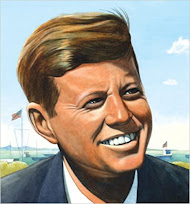In a previous post, I told about American History chapter books that I am reading aloud to Gracie over the next few months. I recently found a blog (
Thrive in Grade Five) by a lady who teaches 5th grade in a public school in Oklahoma. She wrote a blog post that shares books to read aloud to students. I went to my library's website and put a number of books on hold. I think I must have found another source of American history picture books because I have more books than what she mentioned; however, I don't remember what the other website was. (I think I probably searched for the author's names and found other titles that looked good.)
Here are the books that we will be reading over the next few weeks. Yes, we read a good bit. I will give a short review of each as we go through them and will update this blog post.
Both Gracie and I really liked this book! Gracie loved the illustrations and thought they were well done. I, too, liked the illustrations and I liked how there was just enough information in the text for someone to learn about life was like for a typical person who had that particular job. Each two-spread page represents a different person: an apprentice, a basket trader, a barber/wigmaker, a Son of Liberty, and several others. I highly recommend this book!
This book was just ok. Some of the information was interesting. I did like how each page or two-page spread had an informational box that declared if some statements were Fact or Myth. Neither Gracie nor I were impressed with the illustrations. Gracie declared this book to be a "never again" book, and although I'm not sorry we read it, I do agree that it was a "once in a lifetime" experience.
I read half of this book and said I would read the rest later tonight (we read twice a day), and Gracie said, "No keep," which is her way of saying she didn't care for it. I really like the premise of the book: to highlight what women and girls did during the American Revolution did since a lot of emphasis is placed on the men. I thought it was entertaining and informational. However, Gracie did not like the illustrations (my apologies to the illustrator). I may read the rest of the book myself later on.
We both liked this book! The young lady has a clever way of getting information to her brother who is serving George Washington's army. Gracie liked the illustrations. The story was touching; I had to have her read the last page because I knew I wouldn't be able to do it without crying.
*Also on Kindle Unlimited
This was a cute and funny book about John Hancock, Paul Revere, George Washington, Ben Franklin, and Thomas Jefferson. It tells a brief story about when each was a kid and how it related to something they did as adults. In the back was a listing of facts and myths.
This was a very simple book. Gracie didn't really like the illustrations.
This was a silly story about how George Washington lost all of his teeth. We didn't really care for it.
This is a book I liked because it was sad. It gives a look at how homesick an Indian boy was after being forced to go to school and give up his native culture.
We both liked the story although Gracie thought some of the pictures were a little creepy. It's a good story of friendship between an Indian girl and an enslaved boy.
We liked this book and the illustrations.
*Also on Kindle Unlimited
I liked this book about a young, eleven-year-old boy who joined the Union army as a bugler along with his older brother Davy after their two oldest brothers had been killed in the war. He forms a brief, otherwise-unlikely friendship with a young boy from the Rebel army. With a flash of inspiration, he saved lives during the Battle of Gettysburg.
This was a very good book about a family who left their home in Illinois to make a new life in Nebraska. The mother is homesick and concerned about loneliness. The older daughter finds a way to bring comfort and hope to her.
We enjoyed this brief overview of Teddy Roosevelt's life. I admire his tenacity and desire to do right in spite of opposition.
This was a cute story and very suitable for today's time since it is set in 1918 during the influenza pandemic. I admire stories about children who rise up and take charge to do what is needful.
This book was ok. Gracie didn't care for the illustrations. The story was very informative about important women in America's history. I knew it would be a bit more liberal than what we personally believe, but it wasn't over-the-top and I think I explained some things to Gracie.
This was a cute book. I think Gracie was neutral, but she did like the dog. I had never heard of Diana, so I enjoyed reading a true story that I was not familiar with. I liked how she became an inspiration for others during WWII.
This was a good book. Gracie thinks that JFK looks like Donald Trump because of his hair. This book gave a good overview of his life and told us about his successes and failures. Of course, we adults know him to be an inspirational part of our history. It mentioned his tragic death, but, thankfully, told it simply and without details.





![The Scarlet Stockings Spy (Tales of Young Americans) by [Trinka Hakes Noble, Robert Papp]](https://m.media-amazon.com/images/I/51TVJ3sBoHL.jpg)






![The Last Brother: A Civil War Tale (Tales of Young Americans) by [Trinka Hakes Noble, Robert Papp]](https://m.media-amazon.com/images/I/51DPx3XfDVL.jpg)





